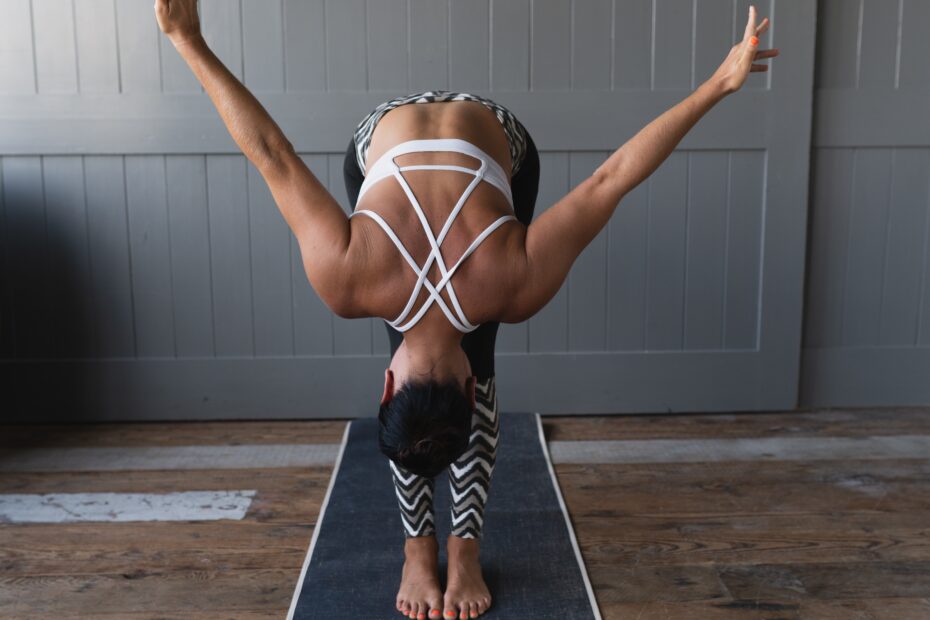An Overview of Natural Fibre, Sticky and Man Made Yoga Mats
Yoga mats are an important part of practicing yoga comfortably. Most yoga studios have hardwood floors, so without some kind of mat, participants are liable to slip or suffer from the lack of padding. Although yoga studios often offer a mat rental service, this ends up being more expensive than a personal mat over time and may also be a hygiene problem. For these reasons, regular students of Yoga should purchase their own mat for use in the studio and at home.
There are several different options available when it comes to choosing yoga mats, and buyers should choose the type of mat which best suits their style and preference.
Factors to Consider When Choosing a Yoga Mat:
- Amount of grip needed to avoid slipping
- Thickness of mat (Generally, a yoga mat should not be thinner than 4mm; and some people prefer an even thicker mat for comfort, and to cushion and protect their joints).
- Size (a taller person would likely do better with a larger yoga mat)
- Type of yoga being practiced (A durable, non-slippery yoga mat would be ideal for a vigorous yoga practice, such as Ashtanga yoga; however, a a basic sticky mat is appropriate for a Hatha-style yoga practice).
Sticky Yoga Mats
The sticky mat is probably the most familiar type of yoga mat for most people. Basic, readily available and inexpensive, the sticky yoga mat would be a good choice for a beginner or someone who does not practice yoga on an regular, extensive basis.
Sticky mats are not necessarily the best choice of a yoga mat when it comes to the environment or one’s health, however. These mats contain PVC (polyvinyl chloride), an environmental toxin. Other ingredients of sticky mats can often include: lead, cadmium, and a class of chemicals called phthalates, which can disrupt the endocrine system, among many other health problems.
Foam Mats
Thin, simple foam mats are among the most popular type of yoga mat for several reasons. They are inexpensive, durable, and come in many appealing colors and patterns. They stick to floors well and become even stickier with use to minimize the danger of slipping. Foam mats are also very easy to clean: hose them down when they start to smell, and they’re good as new. A foam mat is an all purpose choice that will work well for most types of yoga classes including Hatha, Chakra and Ashtanga.
Potential buyers should be aware that foam mats have a bit of a harsh chemical smell when they are brand new, and may be slick if they are not moistened prior to their first use. Foam is also less environmentally friendly than other materials and this is often a concern for yoga students.
Natural Fiber Mats
Yoga mats that are made from fibers like cotton or linen are much more environmentally friendly than those made from foam. Also, unlike foam, they absorb sweat very well and don’t have an odor that some may find undesirable. Fiber mats are available in a variety of thicknesses, so participants can choose to have more or less padding as they find comfortable.
Unfortunately, fiber mats do tend to be very slippery on wood floors and may not provide the best steady base. A fiber mat should also not be used alone for Bikram or hot Yoga. Purchasing a non-slip mat to place under the fiber mat counters this problem. One other potential problem to be aware of is that fiber mats stain easily and for those that attend yoga classes often, could be an aesthetic issue.
Rubber Mats
Rubber mats are available in different thicknesses and have a cushiony quality which many people find appealing. They are quite durable and are available in several different colors. Also, they grip exceptionally well on all different surfaces and therefore, ideal for safety purposes.
Rubber mats do tend to be more expensive than other mats, and should never be stored in very hot areas or in direct sunlight. They also have a strong odor which lasts for a long time (kind of like a new car smell).
Cotton Yoga Mats
Cotton yoga mats are a good choice for certain types of yoga that produce a lot of sweating, such as Bikram or Ashtanga. These mats absorb sweat, preventing slipping; however, students should take caution, as cotton yoga mats can slide around on a hard floor, causing potential injury.
Travel Yoga Mats
Lightweight and portable, travel yoga mats are ideal for someone who travels often. For transportation ease, travel yoga mats are designed to be very thin, offering little or no cushioning, and would be best used on a carpeted surface or over a blanket or towel.
Choosing a yoga mat depends largely on the student’s personal requirements, as well as the type of yoga being practiced. With so many types of yoga mats available on the market, there is a yoga mat appropriate for every yoga student.
Choosing the Best Mat
The ideal mat for any given yoga student will vary according to personal preference and the type of yoga being performed. For Bikram or Hot Yoga in which a participant can expect to sweat heavily, students should choose a mat which will absorb sweat and prevent slipping. For example, a fiber mat placed on top of a non-slip base absorbs sweat while remaining steady and safe.
Ultimately, the best yoga mat depends upon the tastes of the person using it. With several varieties to choose from and a list pros and cons for each, a yoga or meditation practitioner can choose the mat which best suits them.
